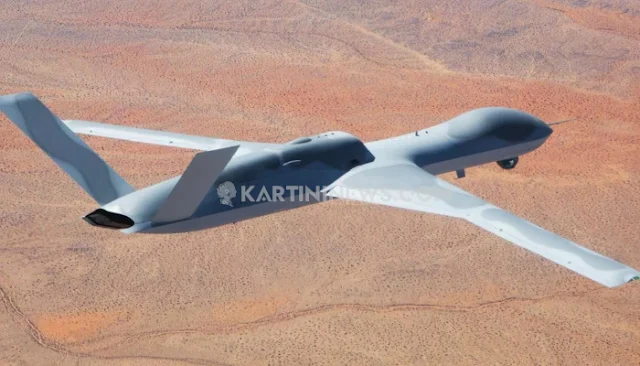Exclusive: U.S. MQ-20 Avenger Drone Kills First-Ever Air Target in Simulation Using Shield AI's Hivemind
General Atomics Aeronautical Systems Inc. (GA-ASI) and Shield AI tested the MQ-20 Avenger unmanned aerial vehicle (UCAV) with the Hivemind autonomous software on June 11, 2025, marking a new milestone in unmanned air combat. In a live-virtual-constructive (LVC) setting, this exercise was the AI system's first attempt at simulating an autonomous shootdown. In light of the U.S. Air Force's transition to AI-driven operations, this event demonstrates the growing maturity of autonomous collaborative aircraft technology, according to General Atomics and Shield AI. The test marks a sea change in the deployment of scalable combat AI and also represents the operational realism of existing autonomy.
The primary purpose of GA-ASI's jet-powered Unmanned Combat Aerial Vehicle (UCAV), the MQ-20 Avenger, is to serve as a testbed for upcoming autonomous systems. Powered by a Pratt & Whitney PW545B turbofan engine, it has a wingspan of 66 feet, can achieve speeds of over 400 knots, and has an endurance of over 20 hours. The Avenger, which was built with internal armament bays, satellite data link connection, and a low detectable profile, is becoming more and more equipped with third-party autonomous systems, such as Shield AI's Hivemind. During the June 2025 demonstration, the UCAV demonstrated its ability to execute combat missions in denied environments and seamlessly integrate AI by executing complex maneuvers like autonomous air-to-air engagement, combat air patrol, and midair station-keeping in coordination with a virtual twin.
As a replacement for the MQ-9 Reaper, the Avenger was developed in the early 2000s with the goal of improving stealth, speed, and weaponry. It was first created for strike missions, but it has since developed into a vital test platform for AI software testing and manned-unmanned teaming (MUM-T). Hivemind was first integrated in February 2025 during the Orange Flag 25-1 exercise, when it managed flight administration duties. Using A-GRA-compliant mission planning tools, Hivemind advanced to militarily significant activities by June, demonstrating the quick software-hardware convergence enabled by the Department of Defense's modular architecture strategy.
The Avenger's jet propulsion, full internal weapons room, and increased cargo capacity set it apart from other UCAVs like the Boeing Loyal Wingman and Kratos Valkyrie. The Avenger strikes a compromise between speed, endurance, and survivability, whereas Kratos stresses affordability and swarm tactics, and Boeing's Loyal Wingman concentrates on modular payload integration. Hivemind's AI autonomy sets it apart from older remotely piloted systems and puts it on par with Anduril's Lattice OS. The MQ-20 has an integration advantage over previous systems that rely on fixed architectures since it can switch between third-party software and government-provided autonomous stacks without experiencing any stability issues while in flight.
This breakthrough is strategically in line with the U.S. Air Force's Collaborative Combat Aircraft (CCA) goal, which wants to combine clever, affordable autonomous drones with manned fighters like the F-35. Since GA-ASI's YFQ-42A was chosen as a CCA prototype, it is anticipated that the insights gained from the Avenger-Hivemind testing would directly influence further deployments. The operational calculus in peer-state conflicts is drastically changed by autonomy in air-to-air operations, particularly in circumstances where GPS and communications are prohibited. Decision-making autonomous UCAVs might be vital force multipliers in the Indo-Pacific and European theaters, where disputed airspace and quick threat detection are crucial.
More than merely a technical achievement, the recent simulated autonomous shootdown of the MQ-20 Avenger utilizing Shield AI's Hivemind software represents a new paradigm for unmanned systems. GA-ASI and Shield AI's successful demonstration of scalable, modular autonomy gives them a competitive advantage in the race toward next-generation aerial warfare as military across the world investigate the integration of AI in disputed areas. This test demonstrates how real-time AI coordination and open architecture are quickly moving from theory to practice, redefining air superiority and establishing the standard for next Collaborative Combat Aircraft initiatives. (Red)

